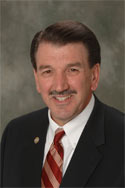This week will mark the 59th anniversary of the Sesser Homecoming Rend Lake Days. Coinciding with that event will be the 50th anniversary of “The Great Sesser Homecoming Ticket Heist.”
As a kid growing up in Sesser the annual homecoming that was held in the city park in the third week of June, was always the highlight of the summer. My main goal through the months of April and May was to save as much money as I could mowing yards so I’d have a pocket full of cash when the James Jackson Shows and Rides rolled into town.
Actually, back then a ‘pocket full of cash’ might have amounted to $15 or $20 bucks but in those days it was a windfall. And knowing my enthusiasm my mom would always hand me three or four Eagle Stamp books a few days before the Homecoming – books that she now doubt had been saving for weeks. I would happily go redeem them – I think they were worth $1.50 apiece – and add the proceeds to my stash.
Also, every year when the ‘carnies’ rolled into town I would head to the Sesser City Park on my trusty bicycle where I was joined by an assortment of other knuckleheads. There, we would spend the entire day watching the workers assemble the assortment of rides while counting the minutes until the homecoming became alive with excitement.
One year, when I was 11 years old, we were at the park and we were all straddling our bicycles very near one of the small booths where ride tickets are sold. Noticing that no one was around one of my friends reached into the booth and grabbed an entire roll of carnival ride tickets. Looking back, there must have been 5,000 tickets on that roll.
As he headed out of the park with the stash shoved up under his shirt, for a reason to this day that I don’t understand, I tagged right along behind him. Much like the cowboys in the movies who rob a bank and then head to a safe house to divide the loot, we decided to ride our bikes to Sesser Lake, located a couple of miles southeast of town, to divvy up the cache of yellow ride tickets. To say that I had visions of endless Ferris wheel and tilt-a-whirl rides on my mind would have been an understatement. As a carnival junkie I had just hit the mother lode.
We realized quickly that we had far more tickets than we could use so we played like Robin Hood – steal from the rich and give to the poor — and began dispersing yellow ride tickets all over town. Soon the word spread in the kid community throughout Sesser and we had guys looking for us hoping to ‘score’ some of the hot (in more ways than one) tickets.
Everything was going along without a hitch until the day that the homecoming was scheduled to start. I headed to town that morning and was soon met by my accomplice who was frantic and talking a mile a minute. During times in the conversation when he was coherent he related that he overheard his parents talking about some ‘stolen ride tickets.’ He said the police had been notified and that the color of ride tickets had been changed to blue. According to his story, anybody with a yellow ticket would be arrested.
As I listened to him talk, and my 11-year-old mind surmised the situation, I realized that was my last day of freedom on Earth. I was certain that I would be sent to prison and celled up with a guy with tattoos, body odor and no teeth. Life as I knew it and enjoyed it would be over.
Actually, the thought of being arrested, sent to prison and branded as a thief paled in comparison to what I knew would happen if my dad found out. The thought of the police and sharing a cell with Bubba was one thing, but the thought of Bill Muir planting a boot in the seat of my pants was something else. For those of you who consider that child abuse, my dad would quickly tell you it was the most successful way he found to deal with a heathen child.
After a few minutes of remorse followed quickly by panic we decided that we still had time to try and round up the stolen tickets. We must have ridden our bikes 50 miles that day trying to recover those blasted yellow tickets and were successful finding everybody but one person. Only minutes before the rides were scheduled to start we found out that the one person we were looking for was already at the homecoming, so we made a frantic run for the park. We found him happily standing in line at the Ferris wheel with a yellow ticket clinched in his hand. We managed to get to him before he got to the ticket-taker, and in the process spared ourselves a lengthy prison sentence.
I plan to attend the Sesser Homecoming this weekend and enjoy one of those delicious barbeques and some roasted corn. And in the unlikely event that I decide to venture on one of the many carnival rides you can be certain that I will gladly pay for the ticket because I still vividly recall that harrowing June day 50 years ago when “The Great Sesser Homecoming Ticket Heist” scared me straight and quickly ended my life of crime.




